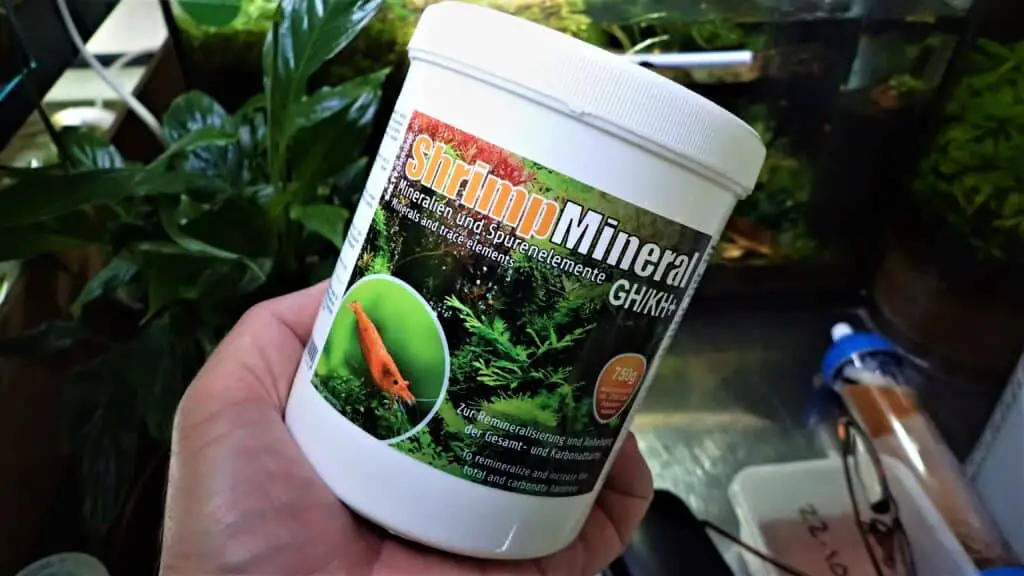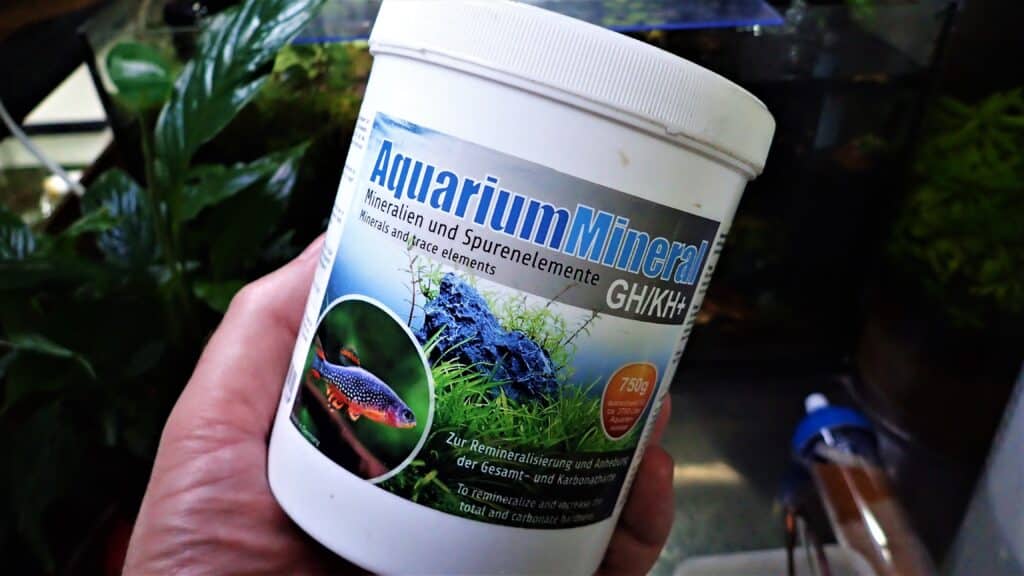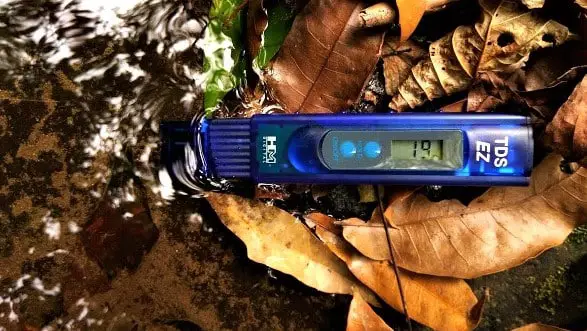For your shrimp’s best health and vitality, the General Hardness (GH) should align with their specific species requirements. Here’s a helpful little table:
| Shrimp Species | Ideal GH Range (dGH) |
|---|---|
| Neocaridina | 6-8 |
| Bee Shrimp | 4-6 |
| Tiger Shrimp | 6-8 |
Remember, these values are guides, not absolute rules. Monitor your shrimps’ behavior to ensure they’re swimming happily in your tank!
Ever since I dove headfirst into the fascinating world of shrimp keeping 20 years ago, one question I’ve come across time and time again is about the General Hardness (GH) in shrimp tanks. I vividly remember my early days, misty-eyed and armed with my test kit, eagerly waiting for the results like a nervous parent at their child’s school play. Over the years, as I dabbled with different species – from the vibrantly colored Neocaridina to the intriguing Bee Shrimps, and the exotic Tiger Shrimps – I’ve come to appreciate the nuanced role that water parameters play in their wellbeing.
In this guide, we’ll delve into the importance of GH in shrimp tanks. We’ll explore the ideal hardness levels for different species, providing you with a handy table for quick reference. We’ll also go over how you can measure and adjust GH in your tanks, helping you become a more informed and confident shrimp keeper. Whether you’re just beginning your journey or looking to level up your shrimpy expertise, there’s something here for everyone. So let’s dive in!

What is GH in a Shrimp Tank?
General Hardness, abbreviated as GH, is a term that aquarists use to describe the concentration of specific minerals dissolved in the water of a shrimp tank. Primarily, it measures the amount of calcium (Ca2+) and magnesium (Mg2+) ions present.
Why do these minerals matter? For one, shrimp, much like us humans, require a balance of minerals in their environment for overall wellbeing. Both calcium and magnesium contribute to critical biological functions in shrimp. For instance, calcium is essential for the development and fortification of a shrimp’s exoskeleton. Shrimp regularly shed their old shells and form new ones in a process known as molting, and an adequate supply of calcium helps ensure this process goes smoothly.
Meanwhile, magnesium helps with the efficient utilization of calcium. Without sufficient magnesium, shrimp may not be able to use the available calcium effectively, potentially hampering their growth and molting processes.
But shrimp aren’t the only ones who benefit from these minerals. The plants in your aquarium need them too. Magnesium, for instance, is a vital component of chlorophyll, the pigment that plants use for photosynthesis. So, a well-maintained GH can contribute to a healthier, greener, and more vibrant shrimp tank.
So, when we talk about GH in a shrimp tank, we’re talking about a vital factor that influences the health and wellbeing of your tank’s inhabitants. It’s one of those things that might seem complicated at first, but with a bit of practice and understanding, you’ll find it’s just another part of the rewarding journey that is shrimp keeping.

Why is GH Important for Shrimp?
Shrimp are sensitive to changes in water hardness and pH, and it is important to keep these levels stable to ensure their health and well-being. GH levels that are too low can cause shell problems, stunted growth, and even death in shrimp. On the other hand, GH levels that are too high can also be harmful, leading to stress and a decreased lifespan for your shrimp.
How to Measure GH in a Shrimp Tank
Measuring GH in your shrimp tank is a simple process. You can purchase a GH test kit from a pet store or online, which will typically include a test solution and a color chart to compare the results. Simply follow the instructions provided with your test kit to obtain an accurate reading of GH levels in your tank.
to obtain an accurate reading of GH levels in your tank.
How to Adjust GH in a Shrimp Tank
If your GH levels are too low, you can add minerals to your tank using a GH booster. If your levels are too high, you can reduce them by using a reverse osmosis unit or by performing partial water changes with distilled or dechlorinated water.

The Buffers I Use: Salty Shrimp Mineral
Maintaining optimal water parameters is crucial for the health and wellbeing of your shrimp. One effective way to manage these parameters is through the use of buffers, which help stabilize and adjust the conditions in your tank. In particular, the Salty Shrimp Mineral line of products has made a name for itself among shrimp keepers. These buffers are best used with reverse osmosis (RO) water, which is purified water stripped of all minerals and contaminants. RO water serves as a blank slate, allowing you to tailor the water parameters precisely to your shrimp’s needs.
Salty Shrimp GH+
If you’re caring for soft water shrimp species, such as Bee Shrimp or Taiwan Bee Shrimp, you’ll find Salty Shrimp GH+ invaluable. This product specifically influences the General Hardness (GH), providing your water with essential minerals without altering the Carbonate Hardness (KH). Soft water shrimp species thrive in conditions with low KH, and using GH+ with RO water allows you to create the ideal environment for them, rich in vital minerals but low in carbonates.
Salty Shrimp GH/KH+
In contrast, if you’re housing shrimp species that prefer slightly harder water, like Neocaridina or Tiger Shrimp, you’d opt for Salty Shrimp GH/KH+. This buffer increases both General Hardness (GH) and Carbonate Hardness (KH). These shrimp species thrive in higher KH levels, and the GH/KH+ product, when mixed with RO water, helps create the perfect conditions for them to flourish.
Remember, each shrimp species has its own specific requirements, so always make sure to adjust the GH, KH, and other water parameters to match the needs of your aquatic pets.
Using TDS Pens and Conductivity Meters in Shrimp Keeping
Monitoring water parameters is a crucial part of shrimp keeping, and technology can lend us a helping hand here. Two commonly used gadgets are TDS (Total Dissolved Solids) pens and conductivity meters. These devices offer a simple and effective way to measure the mineral content and purity of your tank water. But it’s important to remember: they give the most reliable results when used with reverse osmosis (RO) water and a buffer.
TDS Pens

TDS pens measure the total dissolved solids in your water—essentially, everything in your water that isn’t H2O. This includes both beneficial substances, like the essential minerals added by your buffer, and potential contaminants. TDS pens are particularly useful when used with RO water, which starts as a ‘blank slate’ with a TDS of zero. By measuring the TDS of your RO water after adding a buffer, you can ensure you’ve added the correct amount to achieve your desired GH.

Conductivity Meters
A conductivity meter, on the other hand, measures the ability of your water to conduct electricity. Since dissolved salts increase water’s conductivity, this gives you an indirect measure of your water’s mineral content. Like TDS pens, conductivity meters are most reliable when used with RO water and a buffer. The purer your starting water, the more accurately these devices can measure the changes you’ve made.
Remember, though, that neither TDS pens nor conductivity meters can tell you what kinds of minerals are in your water, or in what proportions. They should be used as a supplement to, not a replacement for, regular testing of GH, KH, and pH.
When used correctly, these devices can help you make sure your shrimp have just the right environment to thrive.
Conclusion
Maintaining the right GH in your shrimp tank is crucial to the health and happiness of your tiny aquatic friends. Tailoring the GH to your shrimp species, whether it’s the vibrant Neocaridina, the intriguing Bee Shrimp, or the exotic Tiger Shrimp, is key. And remember, if you’re ever in doubt, a GH between 4-8 dGH tends to work well for most common shrimp species.
If you have more questions or need help with your shrimp keeping journey, please don’t hesitate to reach out. Here’s to a thriving tank and Happy Shrimp Keeping!
FAQ
Can GH be too high for shrimp?
Yes, GH can indeed be too high for shrimp. Extremely high levels can lead to health problems, such as failed molts. It’s crucial to maintain the GH within the ideal range specified for the particular species you are keeping.
What is a good GH and KH for cherry shrimp?
A good GH for Cherry Shrimp, a type of Neocaridina, is between 6-8 dGH. The ideal KH range is 3-6 KH. These values can vary slightly depending on your shrimp’s specific needs and overall tank conditions.
Is GH important for shrimp?
Absolutely. GH measures the total amount of dissolved magnesium and calcium ions in the water. These minerals are essential for a shrimp’s health, particularly their ability to molt and grow.
What GH and KH levels for Neocaridina shrimp?
For Neocaridina shrimp, the recommended GH is between 6-8 dGH, while the KH should be in the 3-6 KH range. These shrimps are hardy but prefer slightly harder water.
Is high KH bad for shrimp?
High KH isn’t inherently bad for shrimp, but it can be problematic if it leads to unstable or excessively high pH levels. It’s best to maintain a stable KH that supports a stable pH suitable for your shrimp species.
What hardness for cherry shrimp?
For Cherry Shrimp, aim for a GH between 6-8 dGH and a KH of 3-6 KH. These parameters will create a suitable environment for these colorful creatures to thrive.
What is GH KH+ for shrimp?
GH KH+ is a type of remineralizer used in shrimp tanks to increase the General Hardness (GH) and Carbonate Hardness (KH) of the water, particularly when using RO (Reverse Osmosis) or distilled water. It helps to create optimal water conditions for shrimp health and breeding.
